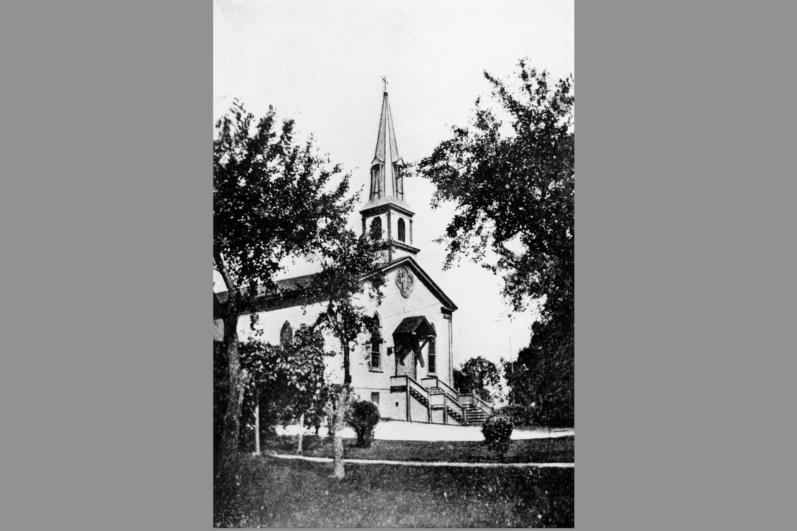The 1842 dedication of St. Mary Church, Quincy
On Sept. 18, 1842, the parish church and cemetery of St. Mary, Quincy, were dedicated by Bishop Benedict Fenwick.
The bishop commenced his day at the Cathedral of the Holy Cross on Franklin Street, celebrating early Mass, and then departing by carriage for Quincy; today, about a nine-mile drive south. By the time he arrived, a large crowd had already gathered, including former President and Massachusetts Congressman John Quincy Adams, accompanied by his wife, Louisa.
They waited for the arrival of Father Terence Fitzsimmons, pastor of St. Augustine's in South Boston, to whose care the Catholics of Quincy were also assigned. Like Bishop Fenwick, Father Fitzsimmons celebrated an early Mass with his congregation before departing for Quincy, his 10 a.m. arrival marking the start of the day's events.
First was the dedication of the church, which Adams describes in his diary. The bishop, "in his Mitre and pontificals," was followed by Father Fitzsimmons, who in turn was followed by two boys from the choir assisting. They emerged from the vestry and proceeded down the crowded center aisle and out of the church, "all around it sprinkling holy water as he (Bishop Fenwick) went." They then reentered the church and the bishop "on his knees consecrated the altar."
Bishop Fenwick then sat facing the capacity crowd of nearly 500 and delivered an address drawing, in the words of Adams, "a close parallel between the building of the Temple by Solomon and the erection of this church, and promised the people all the blessing which God promised Solomon, upon the same conditions of obedience to his will, and denounced the same curses against them if they should forsake God, for the world, the flesh, and the devil."
Mass followed, with Father Fitzsimmons officiating and Bishop Fenwick delivering the sermon, assisted by a well-received choir from Boston. At its conclusion, it was announced that Vespers would be offered at 3:15 in the afternoon, and the bishop then proceeded outside to bless the burial ground adjoining the church.
The Boston Pilot, as it was known at the time, reported the presence of "the Venerable Sage of Quincy, John Q. Adams, and several members of his family, who throughout the Services, evinced the deepest interest and most marked attention."
Bishop Fenwick commented that the church was "a neat domicile building, erected in a handsome situation on a large and beautiful lot of ground." The new church carried no debt, and he acknowledged in his journal the contributions, most likely a mix of money and labor, of local stone cutters and laborers employed at the local quarry, the majority residing in Quincy and Milton.
Adams notes that the events took about three hours, and it appears both he and Bishop Fenwick departed at their conclusion. While Father Fitzsimmons officiated at Vespers, Bishop Fenwick dined with Lydia Russell, wife of the late Jonathan Russell, before returning to Boston.
Briefly, Lydia Russell had also attended the day's events at St. Mary. Her husband had served as a diplomat in Europe and, along with John Quincy Adams, was among the delegates sent to negotiate the Treaty of Ghent, ending the War of 1812 with Great Britain. He returned to Massachusetts and was elected to the U.S. House of Representatives but only served one term. In 1822, he published a pamphlet criticizing Adams over his role in the negotiations, claiming he was pro-British and helped deliver them favorable terms. Adams' series of responses were so devastating they are acknowledged to have prematurely ended Russell's political career and he returned to Massachusetts at the end of his term in 1823.
Sources:
-- Archive, Archdiocese of Boston. Bishop's Journal, Vol. III. 18 September 1842, Pages 4-5. [Transcript].
-- "Dedication of the Quincy Church," Boston Pilot, 24 September 1842. Accessed via newspapers.bc.edu.
-- Massachusetts Historical Society. John Quincy Adams Digital Diary [Transcript] (www.masshist.org/publications/jqadiaries). 18 September 1842.
- Thomas Lester is the archivist of the Archdiocese of Boston.



















